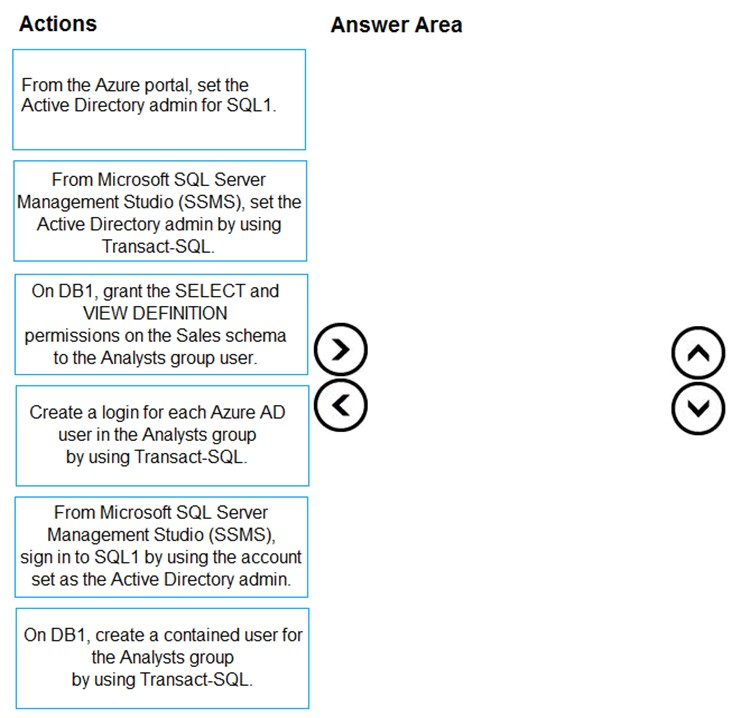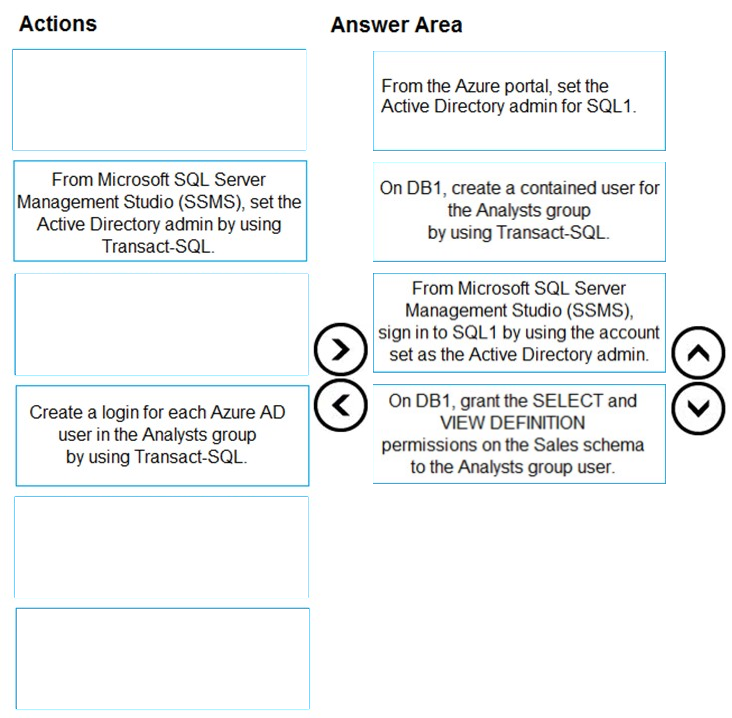

DRAG DROP -
You deploy an Azure SQL database named DB1 to an Azure SQL server named SQL1.
Currently, only the server admin has access to DB1.
An Azure Active Directory (Azure AD) group named Analysts contains all the users who must have access to DB1.
You have the following data security requirements:
✑ The Analysts group must have read-only access to all the views and tables in the Sales schema of DB1.
✑ A manager will decide who can access DB1. The manager will not interact directly with DB1.
✑ Users must not have to manage a separate password solely to access DB1.
Which four actions should you perform in sequence to meet the data security requirements? To answer, move the appropriate actions from the list of actions to the answer area and arrange them in the correct order.
Select and Place:

gallego82
Highly Voted 4 years, 2 months agocadio30
4 years, 1 month agoWendy_DK
Most Recent 4 years, 1 month ago